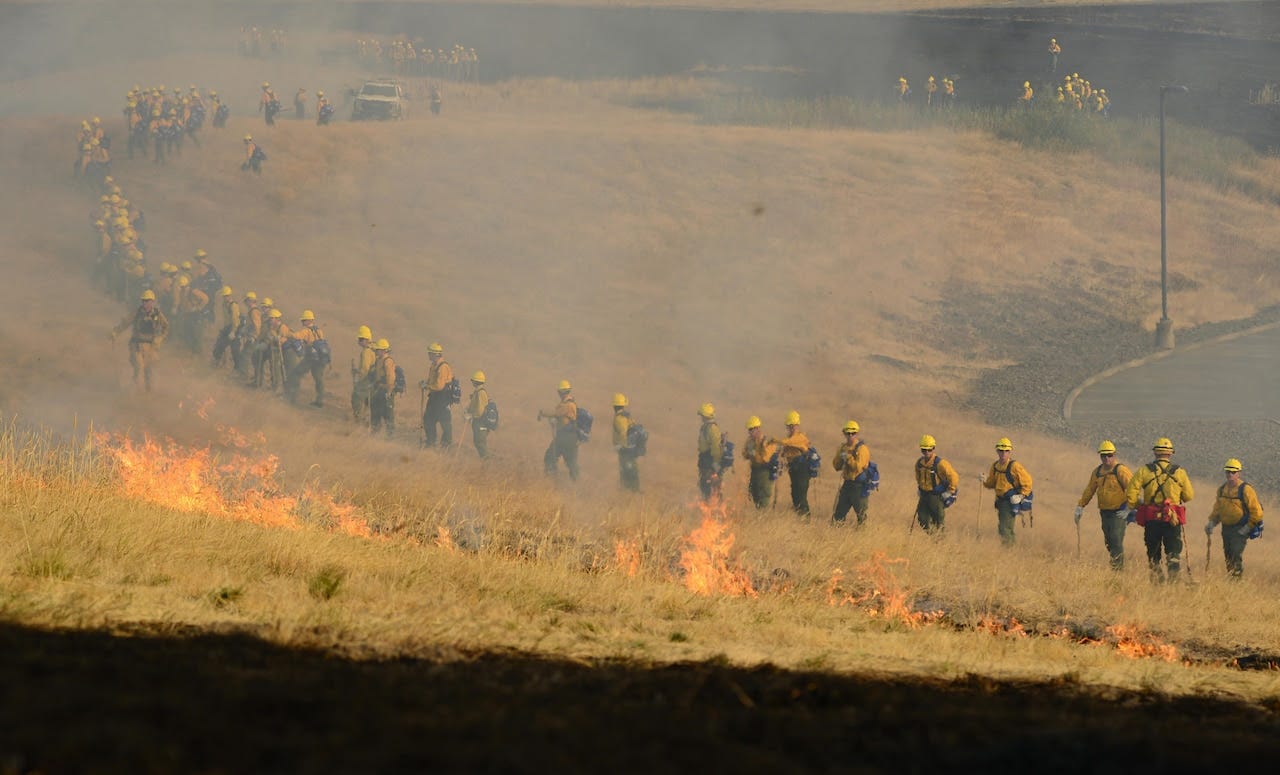When All Else Fails – Using the National Guard in Domestic Emergencies
I appreciate executive branch leaders who understand that as much as I appreciate the support you all give me when I am activated.

The National Guard plays a unique role in missions for both the federal and state governments. The federal government organizes, trains and equips the Guard for use as a reserve of the active-duty military; governors use them for emergencies like fires, floods and earthquakes. During the pandemic, governors used the Guard in novel ways—cleaning hospitals, driving buses, substitute teaching. The Guard will always answer the call in an emergency, but that call comes at a cost.
Organization and Funding. My first deployment was not overseas for combat, but to a camp near Oakridge to fight wildfires. I asked one our civilian state emergency managers about using the Guard; he said, “No offense, you guys are well-organized and there when we need you, but you’re very expensive, untrained, and you have an enormous logistical tail.”
He was right. Activating the Guard is expensive compared to using comparable civilian capacities like trained fire crews. Part of that is we have a low span of control—typically 3-5 subordinates per superior—compared to civilian agencies. This allows us to have greater flexibility by putting more experience with different missions at a lower level, but it’s expensive.
Traditionally the state funds the Guard in domestic operations. As an emergency expands, the federal government funds more of the response. Most COVID-19 activations were funded with federal dollars. It might be tempting to say the state is less careful with federal funds, but the reality is that more cost-effective civilian resources have been exhausted by the time the federal government steps in. The Guard can an expensive choice, but it’s often the last.
Training and Equipment. The federal government funds training for national security missions, not domestic assistance. If we want Guard members to respond to wildfires, we must train them with state funds. In recent years we have prepared one 125-person fire team annually, with two others ready to be trained as needed. It is almost always faster to rely on civilians trained for missions like firefighting, food service and transportation than the Guard.
The Guard generally lacks the equipment to perform domestic operations. The federal government provides most equipment, but not purpose-built assets for domestic operations. Some equipment is dual use. A truck designed for combat operations can handle logging roads in a wildfire. But the Guard is not equipped with the shovels and Pulaskis to build the fire line, or the chainsaws and bulldozers for more specialized work.
Impact on the Guard and the Public. Domestic operations are costly to Guard members and the public. Guard members almost all have other jobs or are enrolled in educational programs. Federally subsidized (but not free) health insurance helps Guard members who run small businesses. A long absence may drive them out of business.
Effects on the public also merit consideration. For instance, during the 2020 Portland protests, some advocated using the Guard to manage crowds. But the memory of Kent State is long. (In 1970, 28 Ohio National Guard soldiers fired at college students, killing four and wounding nine.) The appearance of uniformed Guard members would have had negative implications for both the public and the Guard. At the end of the day, the Guard handled their traditional logistics and support roles, not front-line jobs for which they had little training.
Most of the Guard members I’ve worked with joined to serve at home and abroad. When the Guard is activated, it is usually because civilian capacity has been overwhelmed by an unexpected demand. We take pride in being there in an emergency, but we’re not always the best choice and we’re almost never the first choice. I appreciate governors who understand that as much as I appreciate the support you all give me when I am activated.
Marty Wilde is a member of the Air National Guard. Use of his military rank, job titles, and photographs in uniform does not imply endorsement by the Department of the Air Force or the Department of Defense.

